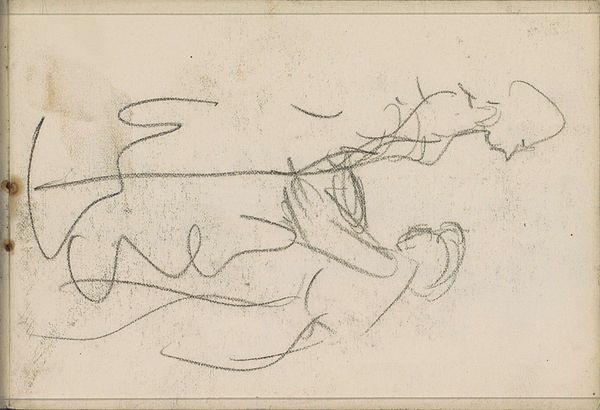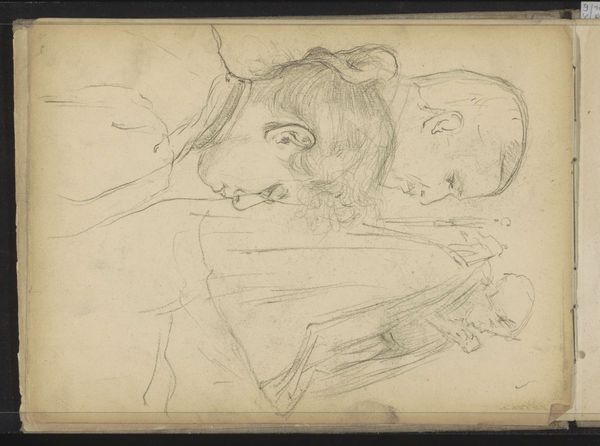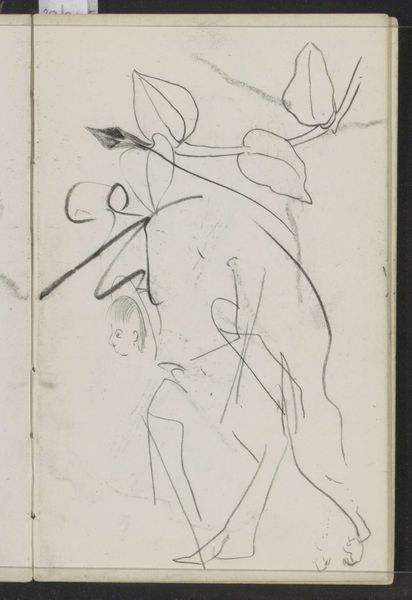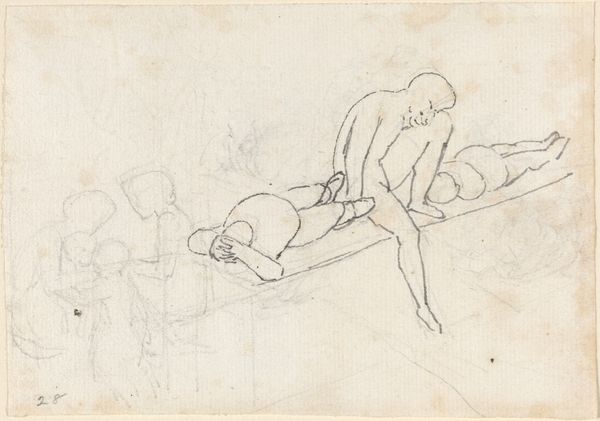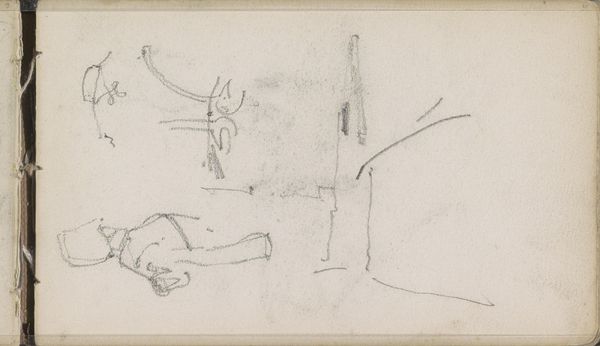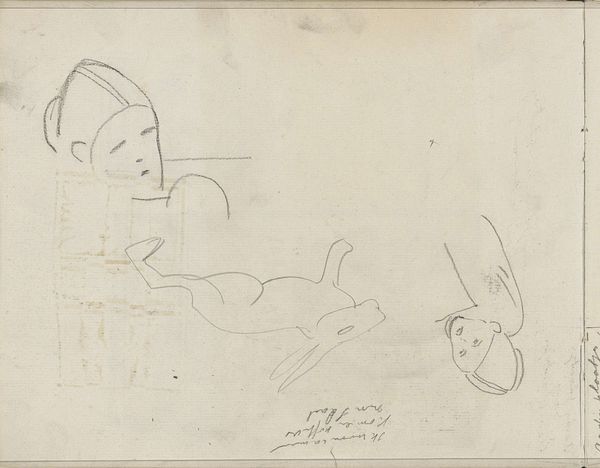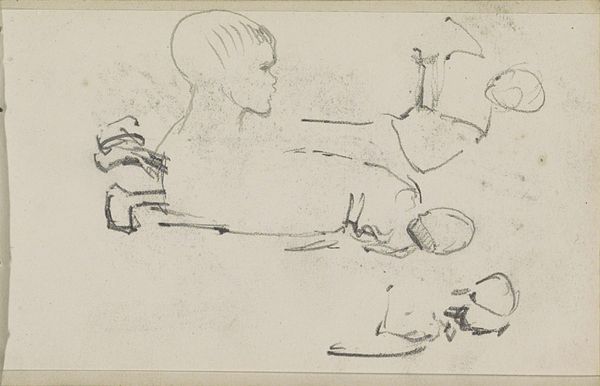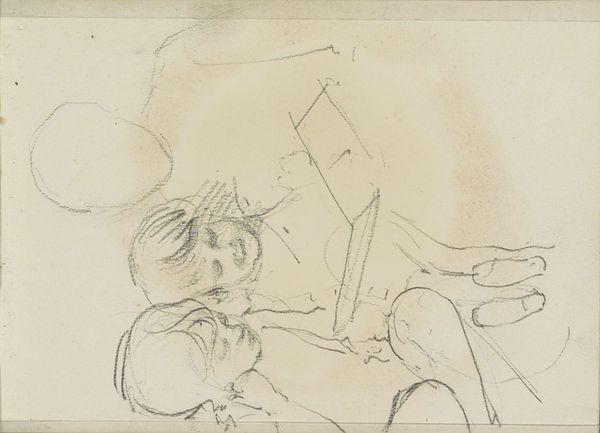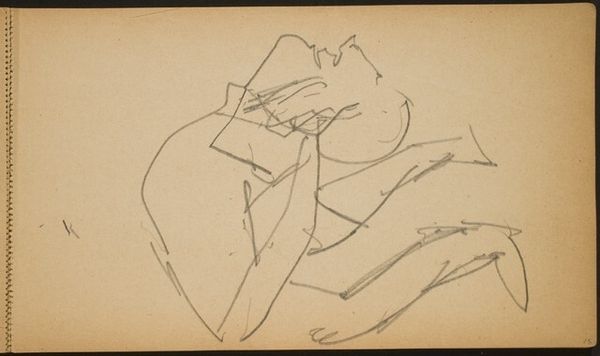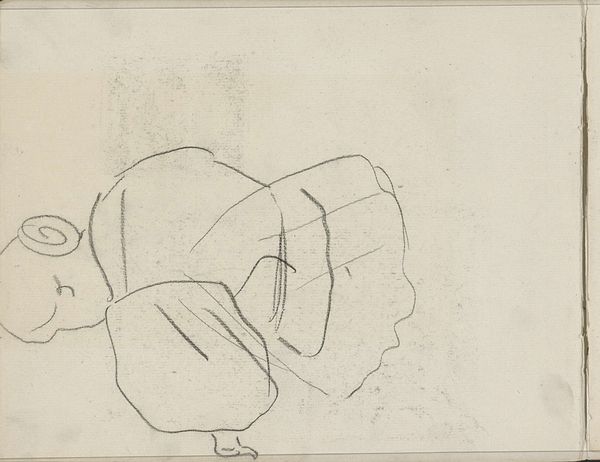
drawing, pencil
#
drawing
#
figuration
#
pencil
#
line
Copyright: Rijks Museum: Open Domain
Editor: This is "Vogel," or "Bird," a pencil drawing from 1895 by Carel Adolph Lion Cachet, housed at the Rijksmuseum. It seems like a preliminary sketch, quick and almost abstract. What stands out to you in this piece? Curator: For me, the immediate interest lies in understanding the process itself. Notice the tentative, searching lines – Cachet isn't presenting us with a finished, idealized form. Instead, we're witnessing the artist grappling with the representation of a bird, focusing on line. It opens up questions about art production. Was this study for a larger work? What purpose did these kinds of drawings serve for artists at the time? Editor: That's fascinating. I tend to look for the final product, but considering the artistic process gives it a whole new meaning. Are you suggesting that drawings like this were simply practical, or is there more to it? Curator: The emphasis on process elevates drawings. The lines become about revealing, not concealing the making of the art. Also, consider that 1895 was a moment of increasing industrialization. Was Cachet, through his material of pencil on paper, reflecting a more "authentic," handcrafted production of images compared to, say, mass produced photographs? Editor: That connection hadn't occurred to me, this shifts how I view even a simple pencil sketch. I appreciate how you drew our attention to the context. Curator: It's precisely the material conditions of artistic production that give the object significance beyond just a pretty picture, right?
Comments
No comments
Be the first to comment and join the conversation on the ultimate creative platform.

